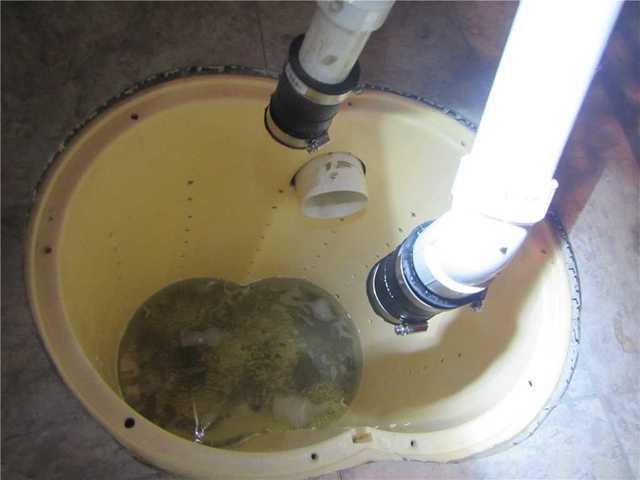Recommended Steps for Maintaining Your Sump Pump
Recommended Steps for Maintaining Your Sump Pump
Blog Article
Each person may have their personal theory on the subject of How to Care for Your Sump Pump.

Sump pumps are essential parts in many homes, particularly in locations susceptible to flooding or too much wetness. They help stop water damage by efficiently eliminating excess water from basements or crawl spaces. However, like any other home appliance, sump pumps require regular upkeep to ensure they work effectively when required the most. Cleansing your sump pump is an important part of its upkeep, and comprehending exactly how to do it properly can save you from costly repair services and possible calamities.
Introduction
Preserving a clean sump pump is crucial for its proper performance and durability. Ignoring this necessary task can cause clogs, malfunctions, and ultimately, water damage to your residential or commercial property. Consequently, learning just how to clean a sump pump is vital for home owners that depend on these tools to keep their basements dry and protected.
Indicators of a Dirty Sump Pump
Understanding when your sump pump requires cleaning is essential for stopping potential malfunctions. Some typical signs that suggest a dirty sump pump consist of unusual sounds throughout procedure, reduced water circulation, and visible particles in the pit. If you notice any of these symptoms, it's essential to cleanse your sump pump immediately to prevent any additional problems.
Planning for Cleaning
Prior to you begin cleansing your sump pump, it's necessary to take some security precautions. Beginning by shutting down the power to the pump to prevent any type of electrical crashes. Additionally, put on appropriate protective equipment, such as handwear covers and goggles, to secure on your own from dust, debris, and potential microorganisms.
Recognizing the Sump Pump
Before diving into the cleaning procedure, it's essential to have a standard understanding of how a sump pump works. Usually set up in a pit or basin below the basement floor, a sump pump contains numerous crucial components, including a pump, a float switch, and a discharge pipeline. When water gathers in the pit, the float switch activates the pump, which after that pumps the water out via the discharge pipeline, far from the building's structure.
Detailed Overview to Cleaning Up a Sump Pump
Shutting Off the Power
Begin by disconnecting the power supply to the sump pump to prevent any mishaps while cleansing.
Checking for Proper Performance
Prior to re-installing the pump, perform a quick test to ensure that the float switch triggers the pump correctly. Pour some water into the sump pit and observe the pump's operation. If whatever is working correctly, you can reconstruct the pump and reconnect the power supply.
Eliminating Debris and Dust
Use a container or a scoop to get rid of any kind of visible debris, dust, or debris from the sump pit. Dispose of the debris appropriately to stop it from clogging the pump or the discharge pipe.
Cleaning the Pump and Float Switch
Once the pit is free from debris, carefully remove the pump from the pit. Check the pump and the float button for any indications of damage or wear. Use a soft brush or fabric to clean the surfaces and get rid of any type of gathered grime.
Purging the System
After cleaning up the pump and float button, flush the sump pit with tidy water to eliminate any type of staying dirt or sediment. This will aid ensure that the pump runs smoothly and effectively.
Maintenance Tips to Keep Your Sump Pump Clean
In addition to routine cleaning, there are a number of upkeep ideas you can follow to maintain your sump pump in ideal problem:
Verdict
Cleansing your sump pump is a critical facet of its upkeep and makes certain that it runs effectively when you need it the most. By following the steps outlined in this guide and including regular upkeep right into your routine, you can extend the lifespan of your sump pump and shield your home from water damage.
How To Inspect And Clean A Sump Pump
There are a few things you may want to look for when inspecting your sump pump. These include:
Leaks: If you notice any leaks around the sump pump, it likely needs to be repaired or replaced. Mud or Water: If there is any mud or water around the sump pump, it’s likely that it’s not working properly and needs to be cleaned. Noises: If you hear any strange noises coming from the sump pump, it may be indicative of a problem. Next, you’ll need to clean the sump pump. If you notice any of these issues, it’s best to clean the sump pump as soon as possible. To do this, you’ll need to remove the pump from its housing. Be sure to have a bucket handy to catch any water that may spill out. Once the pump is removed, use a brush or a spray nozzle to clean off all of the mud and debris. You may also want to check the impeller for damage or wear and tear. If you find any damage, you’ll need to replace the pump.
Once the pump is clean, reattach it to its housing and replace any parts that were removed. Be sure to test the pump before putting everything back in place. Once everything is back in order, put the cover back on the sump pit and refill it with water.
https://elekplumbing.com/blog/how-to-inspect-and-clean-a-sump-pump/

Do you really like reading up on ? Make feedback down below. We'd be pleased to hear your opinions about this content. We hope that you visit us again before long. Sharing is caring. Helping people is fun. We truly appreciate your readership.
Call Today Report this page